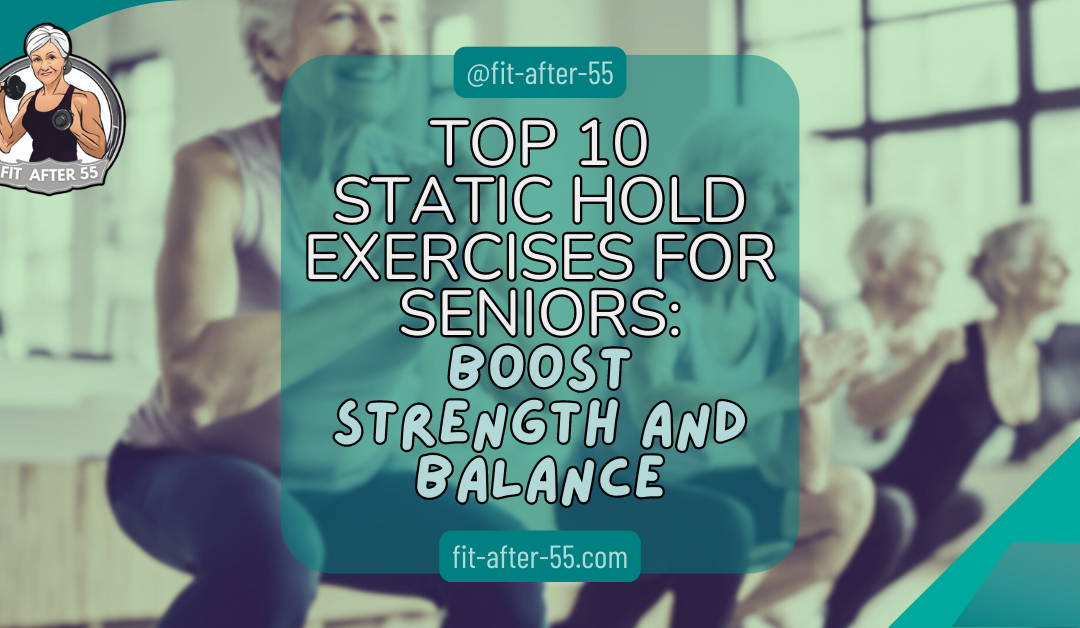Looking to boost your strength and balance without the need for fancy equipment or complicated routines? Static hold exercises are perfect for you! They’re all about holding a position to build muscle and stability, and they’re super effective for staying fit and strong as we age.
In this list, we’ve rounded up the top 10 static hold exercises specifically designed for seniors. These moves are easy to incorporate into your routine and can make a big difference in how you feel and move every day. Ready to get started? Let’s dive in and find your new favorite exercises!
Top 10 Static Hold Exercises for Seniors: Boost Strength and Balance
Static hold exercises are a great way for seniors to build strength and stability. These exercises involve holding a position without moving, which can be safer and easier on the joints than traditional strength training. Isometric exercises strengthen muscles by maintaining a fixed position for a set time.
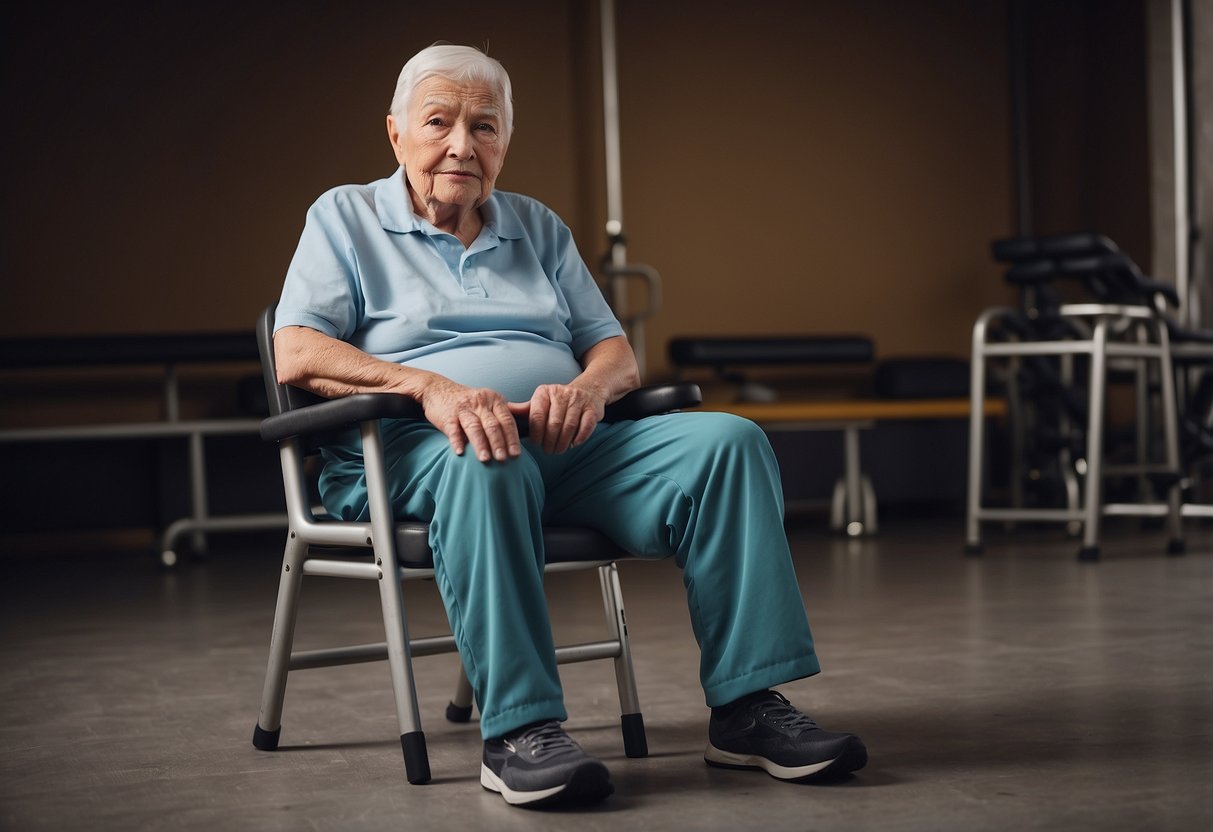
Static holds can help improve balance, posture, and everyday functional movements. They’re adaptable to different fitness levels and can be done with minimal equipment. From wall sits to planks, there are many options to target various muscle groups.
By adding static holds to your routine, you can boost your strength and confidence in daily activities. These exercises are an excellent addition to a well-rounded fitness plan for seniors.
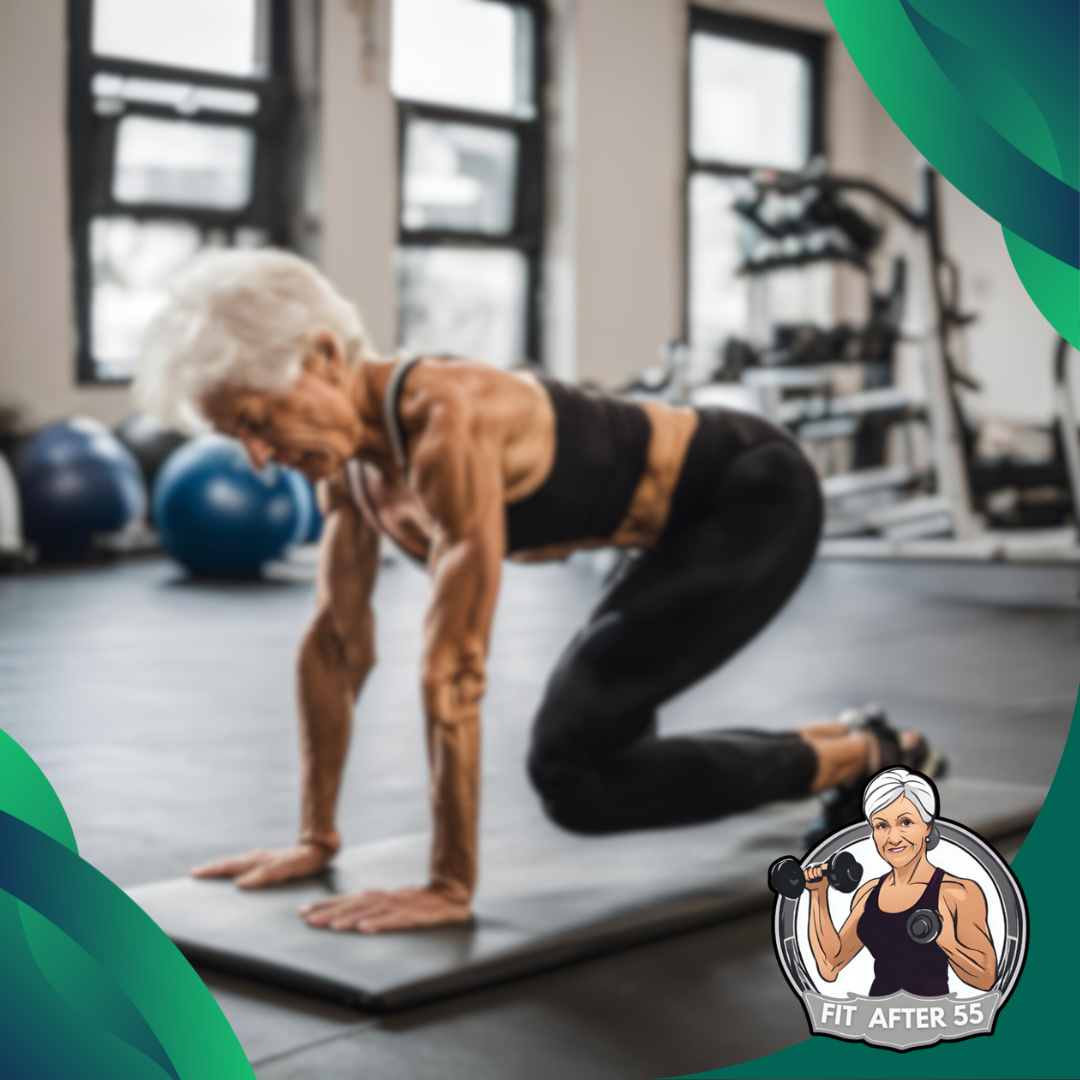
Key Takeaways
- Static holds can improve strength and stability with less stress on joints
- These exercises are adaptable to different fitness levels and require minimal equipment
- Regular practice can enhance balance, posture, and everyday functional movements

The Importance of Strength Training for Seniors
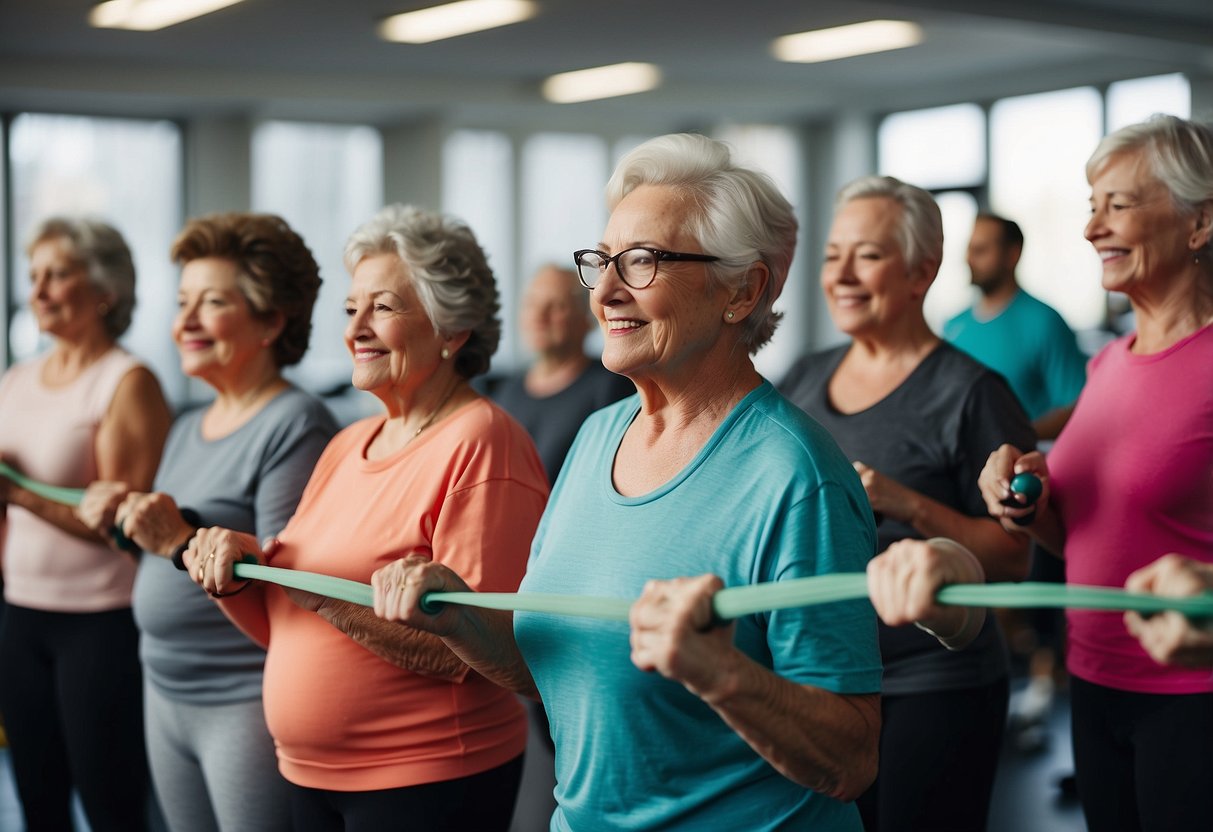
Strength training is crucial for seniors. It helps maintain muscle mass and bone density as you age. Regular exercise can improve your balance and reduce the risk of falls. Strength training exercises for seniors can boost your energy levels. They also enhance flexibility and keep your bones strong. This can lead to better overall health and independence.
You don’t need fancy equipment to start. Many exercises use your body weight or simple tools like resistance bands. These workouts can be done at home or in a gym.
Strength training can help manage chronic conditions. It may ease symptoms of arthritis and lower back pain. It can also improve heart health and help control blood sugar levels.
Regular exercise boosts mental health too. It can reduce stress and improve mood. You may sleep better and feel more confident in your daily activities. Always check with your doctor before starting a new exercise program. They can help you choose safe and effective workouts for your fitness level.
Safety Precautions for Static Hold Exercises
Static hold exercises can be great for seniors, but safety is key. You need to take certain steps to protect yourself and get the most benefit. Being careful helps prevent injuries and makes your workouts more effective.
Consulting with Healthcare Providers
Before starting any new exercise routine, you should talk to your doctor. This is extra important if you have health issues or take medicines. Your doctor can tell you if static holds are safe for you.
Ask about any moves you should avoid. Some health problems might make certain poses risky. Your doctor might suggest changes to make the exercises safer for you. You might also want to see a physical therapist. They can show you how to do the holds correctly. This helps you stay safe and get better results.
Proper Warm-Up Techniques
A good warm-up is crucial before doing static holds. It gets your body ready and lowers the risk of harm. Start with 5-10 minutes of light cardio like walking or marching in place. Next, do some easy stretches. Focus on the parts of your body you’ll use in your workout. Hold each stretch for 10-30 seconds without bouncing.
Try these warm-up moves:
- Arm circles
- Shoulder rolls
- Gentle twists
- Knee lifts
A warm-up helps your muscles loosen up. It also gets your heart rate up slowly, which is safer for seniors.
Understanding Limits and Pain Signals
Listen to your body during static holds. If you feel sharp pain, stop right away. Some muscle burns are normal, but pain is not. Start with short hold times, like 10-15 seconds. You can slowly make them longer as you get stronger. Don’t push too hard too fast.
Watch for these warning signs:
- Dizziness
- Shortness of breath
- Chest pain
- Nausea
If you notice any of these, stop and rest. Drink some water and sit down. If they don’t go away, call your doctor. It’s okay to challenge yourself, but safety comes first. Remember, progress takes time. Be patient with your body and celebrate small wins.
Benefits of Static Hold Exercises
Static hold exercises offer unique advantages for seniors. These exercises can boost strength, improve balance, and increase flexibility without putting too much stress on the body.
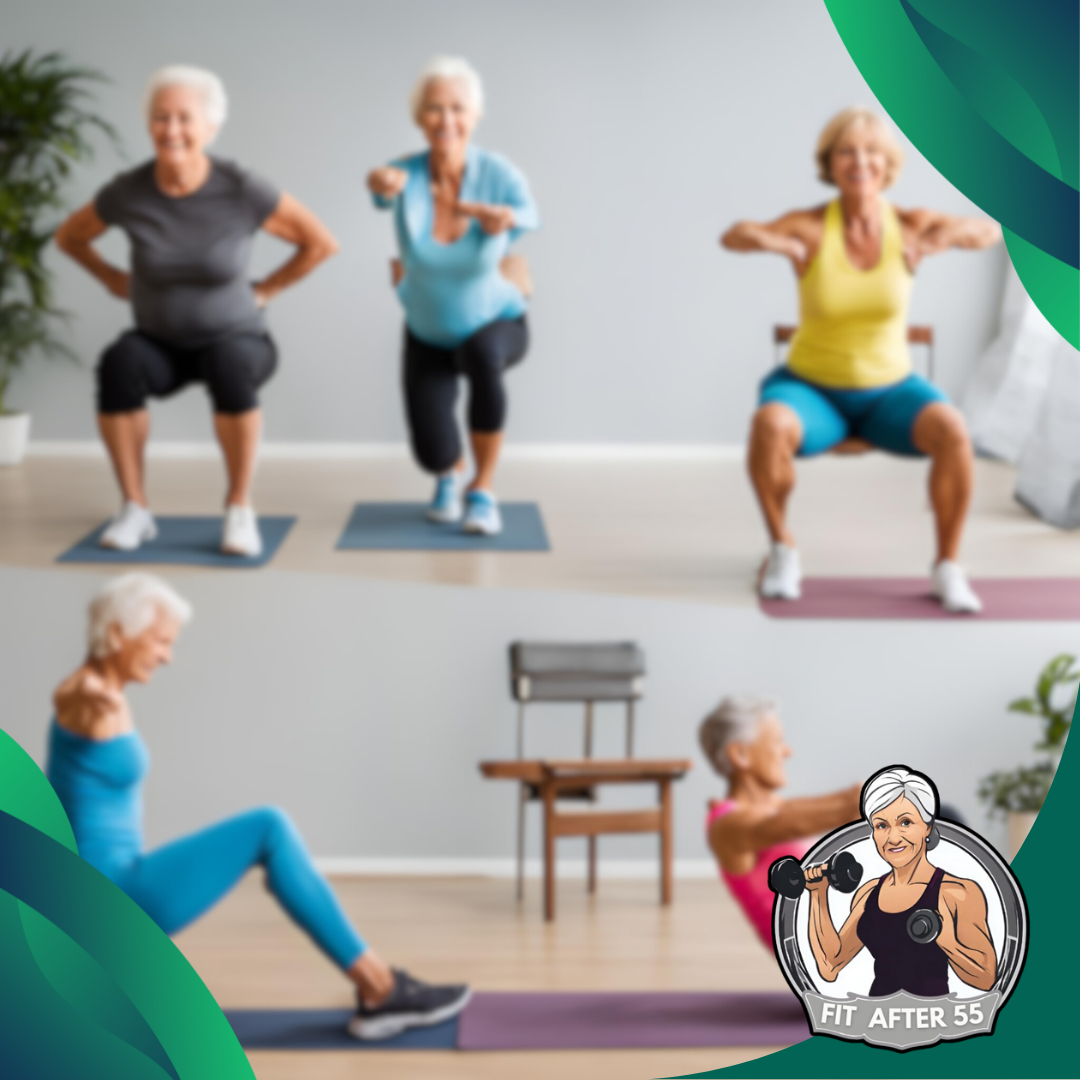
Improved Muscle Strength
Static holds help build muscle strength in a gentle way. You engage your muscles and hold a position without moving. This builds tension in the body, which makes your muscles stronger over time. For seniors, this type of exercise is great because it’s low-impact. You don’t need to lift heavy weights or do intense movements. Instead, you focus on holding a position.
Static holds can target specific muscle groups. For example, a wall sit works your leg muscles. A plank strengthens your core. By doing these exercises regularly, you can increase your overall strength.
Enhanced Balance and Stability
Balance is crucial for seniors to prevent falls. Static hold exercises can greatly improve your balance and stability. When you do a static hold, you engage multiple muscle groups at once. This helps your body learn to stay stable in different positions. For instance, a single-leg stand works your leg muscles and core.
These exercises also improve your proprioception. This is your body’s ability to sense its position in space. Better proprioception means better balance in daily life. Regular practice of static holds can make you feel more confident moving around. You’ll be less likely to lose your balance during everyday activities.
Increased Joint Flexibility
Static holds can also help increase your joint flexibility. This is important for maintaining mobility as you age. When you hold a position, you gently stretch the muscles around your joints. Over time, this can lead to a better range of motion. For example, a static lunge stretch can improve hip flexibility.
Improved flexibility makes daily tasks easier. You’ll find it simpler to reach for items, bend down, or climb stairs. This can help you stay independent for longer. Static holds are also safe for your joints. Unlike dynamic stretches, there are no bouncing or sudden movements. This reduces the risk of injury while still improving flexibility.
Upper Body Static Holds

Static holds can help seniors build strength and stability in their upper body. These exercises focus on maintaining a fixed position, which can improve muscle endurance and joint stability.
Wall Push Hold
The wall push hold is a gentle way to build upper body strength. It’s great for seniors who want to work on their chest and arm muscles without putting too much stress on their joints.
To do this exercise:
- Stand facing a wall, about an arm’s length away.
- Place your hands on the wall at shoulder height, slightly wider than your shoulders.
- Lean forward, bending your elbows slightly.
- Hold this position for 10-30 seconds.
Try to keep your body straight from head to heels. If you need more challenge, step back a bit to increase the lean. Start with 2-3 sets and gradually increase as you get stronger.

Chair Dip Hold
Chair dip holds target your triceps, shoulders, and chest. This exercise can help you build strength for everyday activities like pushing yourself up from a seated position.
To perform a chair dip hold:
- Sit on the edge of a sturdy chair with your hands gripping the seat on either side of your hips.
- Slide your bottom off the seat, supporting your weight with your arms.
- Bend your elbows slightly and hold this position.
Start with 10-second holds and work up to 30 seconds as you get stronger. Keep your shoulders down and away from your ears. If it’s too hard, keep your feet closer to the chair. For more challenges, extend your legs.

Shoulder Blade Squeeze
The shoulder blade squeeze is a simple yet effective exercise for improving posture and upper back strength. It can help counteract the effects of slouching and reduce upper back pain.
To do this exercise:
- Sit or stand with your arms at your sides.
- Squeeze your shoulder blades together, as if trying to hold a pencil between them.
- Hold for 5-10 seconds, then release.
Focus on squeezing your shoulder blades together without shrugging your shoulders. Repeat 10-15 times. You can do this exercise several times a day, even while watching TV or reading. It’s a great way to improve your posture and strengthen your upper back muscles.
Core-Strengthening Static Holds
Static holds can build core strength for seniors. These exercises target your abs, obliques, and lower back muscles. They improve stability and posture without high-impact movements.
Plank
The plank is a top static hold exercise for core strength. Start on your forearms and toes, keeping your body straight. Engage your abs and hold for 10-30 seconds. Beginners can do this on their knees.
As you get stronger, try to hold longer. Aim for 3 sets. Keep your hips level and don’t let your back sag. Breathe normally throughout the hold. This exercise strengthens your entire core, including your lower back.

Side Plank
The side plank targets your obliques. Lie on your side, propped up on one forearm. Lift your hips off the ground, creating a straight line from head to feet. Hold for 10-30 seconds on each side. You can modify this by keeping your bottom knee on the ground for support.
Focus on keeping your body aligned and your core tight. Don’t let your hips drop. This exercise improves lateral stability and strengthens the sides of your core.
Seated Abdominal Hold
This exercise is great for seniors with limited mobility. Sit on the edge of a chair with your hands gripping the sides. Lean back slightly and lift your feet a few inches off the ground. Keep your back straight and core engaged.
Hold this position for 10-30 seconds. You’ll feel your abs working to keep you stable. For an extra challenge, try extending your legs out straight while holding. This exercise strengthens your deep core muscles and improves balance.
Lower Body Static Holds
Static holds for the lower body build strength and stability in seniors. These exercises improve balance and leg endurance without high-impact movements.
Wall Sit
The wall sit is a classic static hold exercise that targets your quads, hamstrings, and glutes. Start by leaning against a wall with your feet shoulder-width apart. Slide down until your thighs are parallel to the ground, forming a 90-degree angle at your knees.
Keep your back flat against the wall and your arms at your sides. Hold this position for 20-30 seconds, or as long as you can maintain good form. As you get stronger, try to increase your hold time.
Remember to breathe steadily throughout the exercise. If you feel any knee pain, adjust your position or stop the exercise.

Standing Quad Hold
This exercise strengthens your quadriceps and improves balance. Stand next to a chair or wall for support. Lift your right foot off the ground and bend your knee, bringing your heel towards your buttocks.
Grab your right foot with your right hand and hold it behind you. Keep your knees close together and your standing leg slightly bent. Hold this position for 15-20 seconds, then switch legs. Focus on keeping your upper body straight and your core engaged. If you can’t reach your foot, use a strap or towel to assist you.
Calf Raise Hold
Calf raise holds to build strength in your lower legs and ankles. Start by standing with your feet hip-width apart. You can hold onto a chair or wall for balance if needed.
Rise onto the balls of your feet, lifting your heels off the ground. Hold this position for 10-15 seconds. Lower your heels back down slowly. For an added challenge, try doing this exercise on a step. Let your heels hang off the edge slightly. This increases the range of motion and intensifies the stretch in your calves.
Aim for 3-5 repetitions of each hold. As you get stronger, gradually increase your hold times.

Glute Bridge Hold
The Glute Bridge Hold is a simple yet effective exercise that strengthens the glutes, hamstrings, lower back, and core. To do it, lie on your back with your knees bent and feet flat on the floor, hip-width apart.
Keep your arms by your sides with palms down. Tighten your core and press through your heels to lift your hips toward the ceiling, forming a straight line from shoulders to knees. Squeeze your glutes and hold the position for 20-30 seconds, gradually increasing to 45 seconds or more as you get stronger.
Lower your hips back down slowly and repeat for a few sets. This move helps improve hip mobility, supports the lower back, and builds leg strength.
Adapting Static Holds for Different Fitness Levels
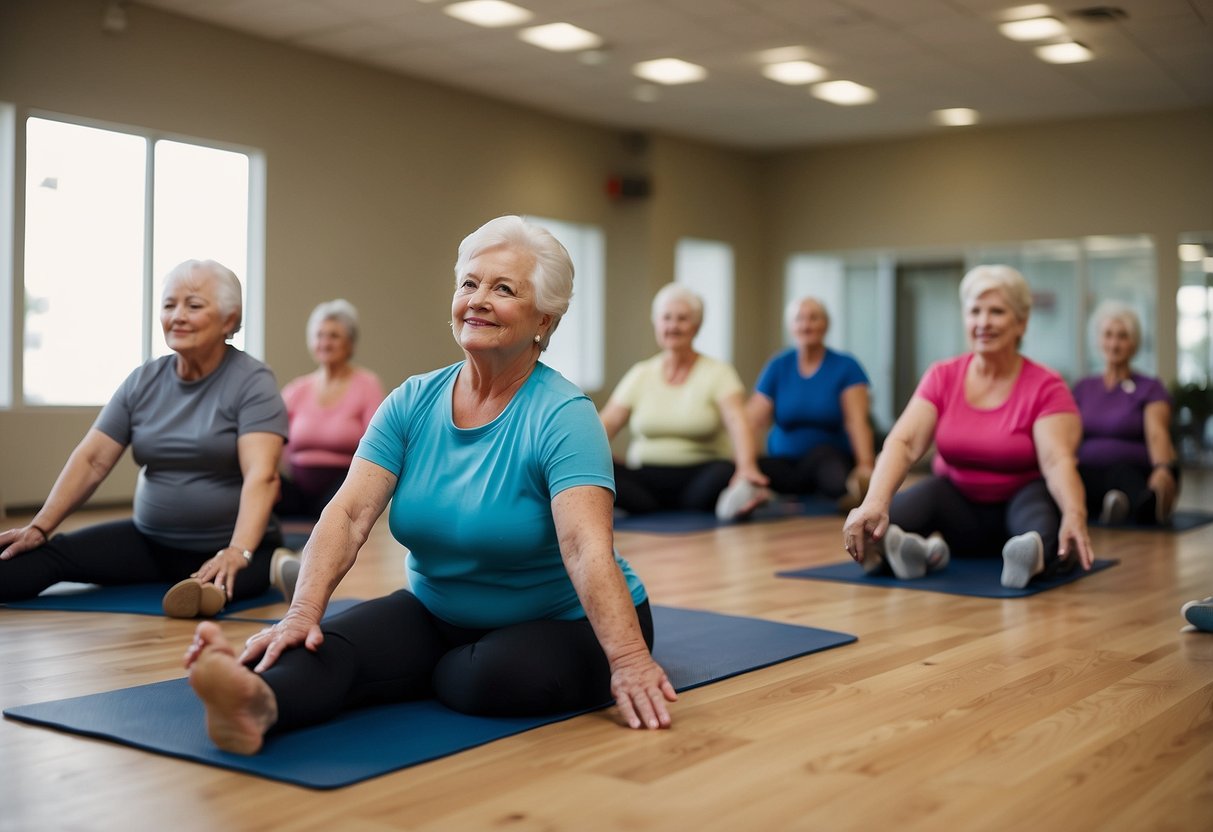
Static holds can be adjusted to suit seniors of all fitness levels. If you’re just starting, begin with shorter hold times and fewer repetitions. For beginners, try holding positions for 10-15 seconds. As you get stronger, gradually increase to 30-60 seconds per hold.
Choose easier variations of exercises to start. For example, do wall sits instead of full squats, or planks on your knees rather than toes. Use supports like chairs or walls to help with balance and stability. This lets you focus on the hold without worrying about falling.
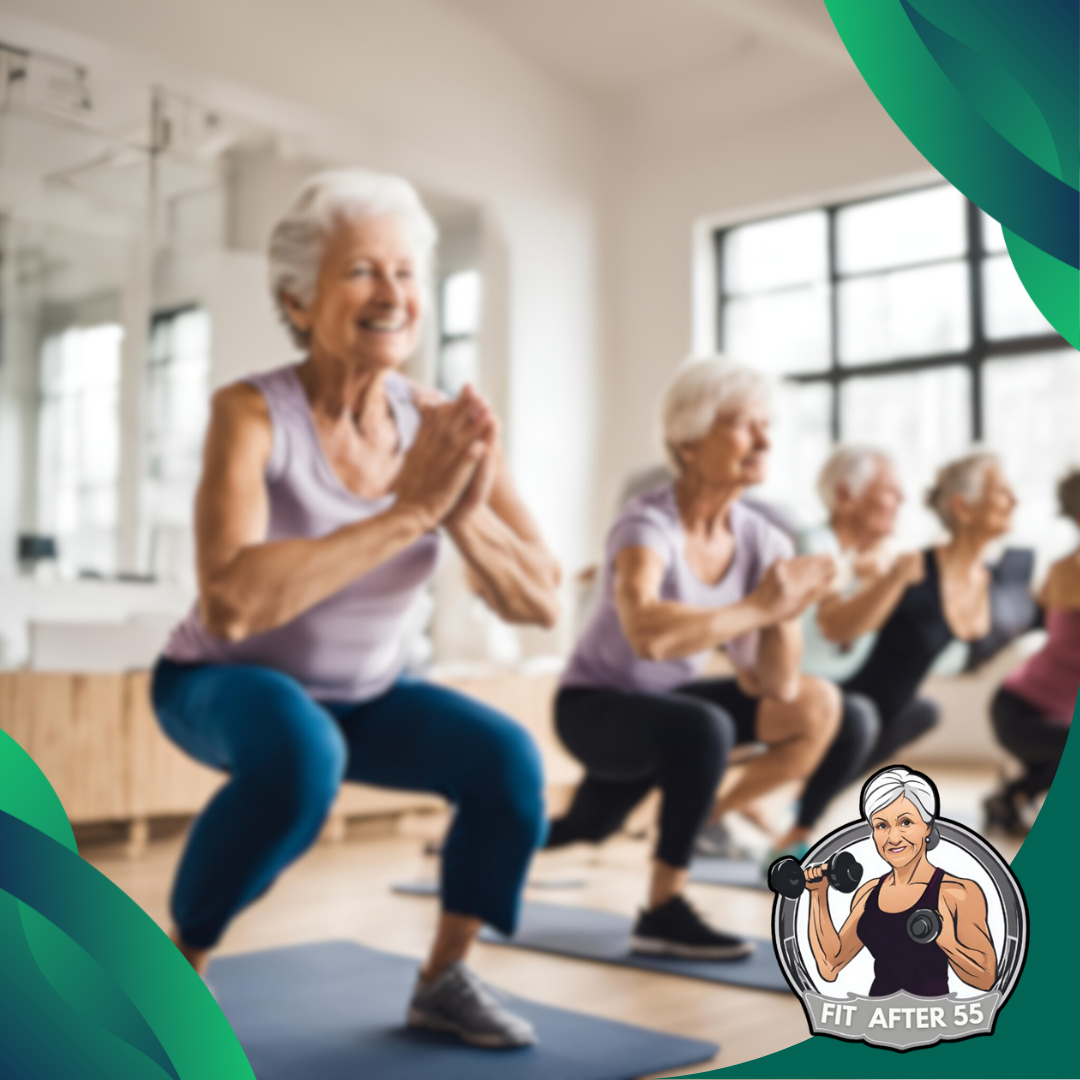
Advanced seniors can challenge themselves by:
- Increasing hold times
- Adding small movements during the hold
- Using light weights or resistance bands
- Doing single-leg versions of exercises
Listen to your body and stop if you feel pain. It’s normal to feel some muscle fatigue, but sharp pain means you should ease up. Static hold exercises can help improve your strength and stability over time. Start slowly and progress at your own pace for the best results.
Incorporating Static Holds into a Daily Routine
Adding static holds to your daily routine can be simple and effective. Start by choosing 2-3 exercises that target different muscle groups. You can do these at home without any special equipment.
Try to do your static holds at the same time each day. This helps form a habit. Morning or evening are good options, but pick a time that works for you. Start with short holds of 10-15 seconds. As you get stronger, you can increase the time to 30 seconds or more. Remember to breathe normally during the hold.
Here’s a sample routine:
- Wall sit: 15 seconds
- Plank hold: 10 seconds
- Arm raise hold: 15 seconds
Do each exercise once, then repeat the set 2-3 times. This should take about 5-10 minutes total. You can do static holds while watching TV or waiting for water to boil. This makes it easy to fit them into your day. Always listen to your body and stop if you feel pain.
Remember to warm up before doing static holds. A short walk or some gentle stretches can help prepare your muscles. Consistency is key, so aim to do your routine most days of the week.
Progress Tracking and Goal Setting
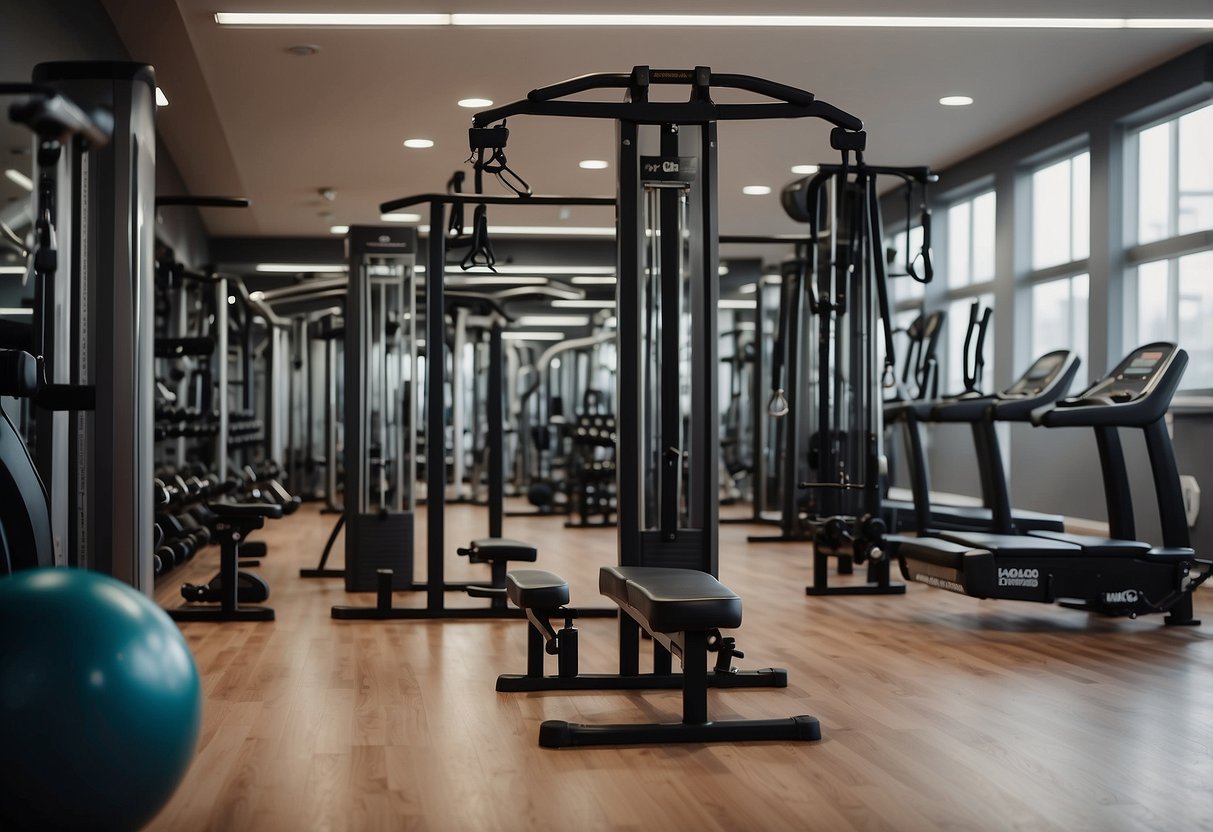
Keeping track of your progress is key to staying motivated with static hold exercises. Use a simple notebook or fitness app to record your workouts.
Write down the date, exercises done, and how long you held each pose. This helps you see improvements over time. Set realistic goals for yourself. Start small, like holding a wall sit for 10 seconds. Gradually increase your time as you get stronger.
Here’s a sample goal-setting plan:
- Week 1-2: Hold each pose for 10 seconds
- Week 3-4: Increase to 15 seconds
- Week 5-6: Aim for 20 seconds
Remember, progress isn’t always linear. Some days you might feel stronger than others. That’s normal.
Celebrate small wins along the way. Did you hold a plank for 5 seconds longer? That’s great! Consider taking photos or videos of your form. This can help you spot areas for improvement and see your progress visually. Setting achievable goals keeps you motivated and on track. Don’t compare yourself to others. Focus on your journey and improvements.
Fun Fact
Did you know that static holds are incredibly versatile and adaptable? Static holds are perfect for everyone, no matter where you are on your fitness journey. Whether you’re just beginning or you’re a seasoned pro looking for a new challenge, these exercises can be easily adjusted to fit your needs. You can modify the intensity by changing the duration or the position, making them accessible and effective for all fitness levels. For instance, a wall sit can be made easier by holding a shorter time or by using a chair for support, while more advanced variations can push your endurance further. This flexibility makes static holds a fantastic option for building strength and balance at any stage of your fitness journey!
Wrap-Up: Top 10 Static Hold Exercises for Seniors – Boost Strength and Balance!
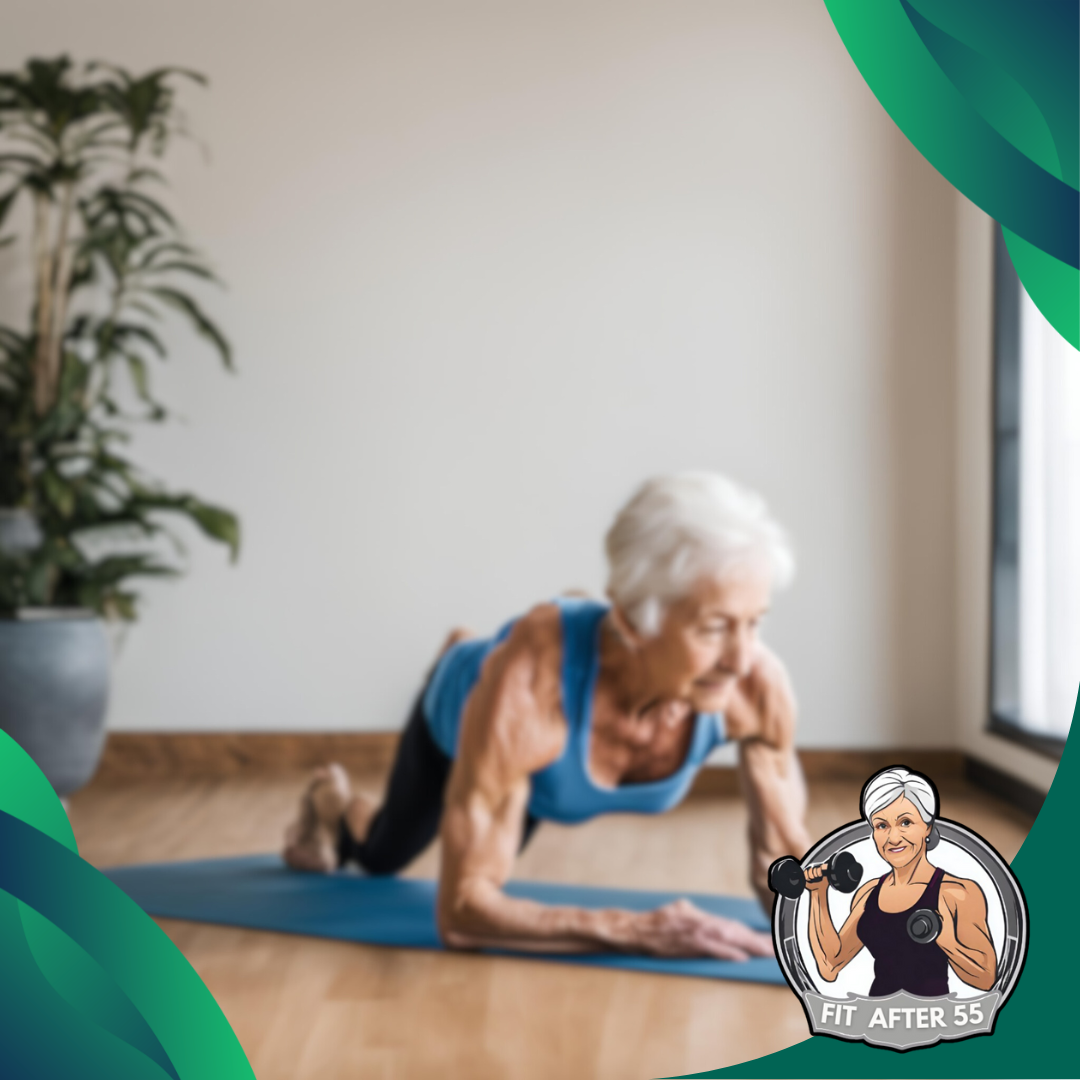
There you have it—the top 10 static hold exercises to help you build strength and balance! These simple yet powerful moves are perfect for seniors looking to stay fit and feel fantastic. Whether you’re just starting out or looking to challenge yourself further, you’ll find that these exercises are adaptable and effective for all fitness levels. So, why not give them a try? Pick a few exercises from the list, set a timer, and see how long you can hold each position. Share your progress with us, and don’t forget to celebrate your achievements along the way! Let’s keep moving, stay strong, and embrace the journey to better health together.
Ready to unlock the power of static holds? Share your favorite exercises and tips with our community. Let’s inspire each other to stay active and healthy.

Frequently Asked Questions
Static hold exercises can greatly benefit seniors. They improve balance, strength, and flexibility. These exercises are safe, easy to do at home, and have many health benefits for older adults.
What are the best static hold exercises for improving balance in seniors?
The best static hold exercises for seniors to improve balance include wall sits, planks and single-leg stands. These exercises help strengthen core muscles and improve stability. You can also try hollow holds and high planks. These exercises work multiple muscle groups at once and challenge your balance.
How can seniors safely perform static hold exercises at home?
To safely do static hold exercises at home, start slowly and use support when needed. Make sure you have a clear space free of obstacles. Use a sturdy chair or wall for balance during exercises like single-leg stands. Always listen to your body and stop if you feel pain or discomfort.
What are the benefits of isometric exercises for people over 65?
Isometric exercises, like static holds, are great for seniors because they build strength without stressing joints. These exercises can improve posture, increase muscle endurance, and enhance overall stability. They also help maintain bone density, which is crucial for older adults.
Which balance exercises are most suitable for a 70-year-old?
For a 70-year-old, suitable balance exercises include standing on one leg, heel-to-toe walks, and sit-to-stand exercises. These exercises are low-impact but effective. You can also try gentle yoga poses or tai chi movements. These practices combine balance work with relaxation techniques.
How long should seniors hold a stretch for maximum benefit?
Seniors should hold stretches for 10 to 20 seconds. This duration allows muscles to relax and lengthen without causing strain. Repeat each stretch 2 to 3 times. Remember to breathe normally during the stretch and avoid bouncing or jerking movements.
Are there any recommended static hold exercises for seniors with limited mobility?
Yes, there are static hold exercises for seniors with limited mobility. Seated exercises like chair yoga pose or arm holds can be effective. Wall pushes and doorway chest stretches are also good options. These exercises require minimal movement but still provide strength and flexibility benefits.
Join Our Fitness Community Today!
Looking for some extra motivation on your fitness journey? Our Facebook page is filled with helpful tips, practical advice, and workout routines specially tailored for those 55 and up. Come be a part of our vibrant and supportive community where we focus on staying active, maintaining good health, and finding joy every step of the way.
Connect with others who share your goals, celebrate your achievements, and find the inspiration to keep moving and feeling great. Let’s start this fitness adventure together and thrive at every stage of life!

